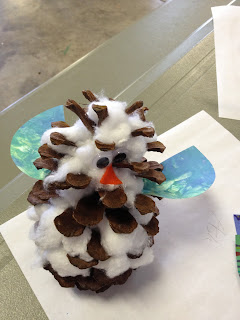Mola Inspired Art
Molas have their origin in body painting. Only after colonization by the Spanish and contact with missionaries did the Guna start to transfer their traditional geometric designs on fabric, first by painting directly on the fabric and later by using the technique of reverse application. It is not known for certain when this technique was first used.
As an inspiration for their designs, the Guna first used the geometrical patterns which have been used for body painting before. In the past 50 years, they also started to depict realistic and abstract designs of flowers, sea animals and birds.
http://en.wikipedia.org/wiki/Mola_(art_form)
In this textiles class we took the time to talk about the Kuna Indians, where they live and their unique artform of Molas. We looked at lots of beautiful examples of Molas and talked about how they are constructed. We noticed the bright colors and intricate designs. The students were really impressed that Kuna begin making these beautiful Molas when they are children.
Our project was to create a Mola inspired piece out of felt. Rather than reverse applique we layered our designs and used tacky glue.
Supplies needed:
pencils
sketch paper
permanent markers
scissors
tacky glue
an assortment of colors of felt
The process:
After we got all inspired by the Kuna artists we got to work creating a simple sketch that would become our map and pattern for our felt versions. Once a sketch was decided upon we outlined it in permanent marker so that we could see it through a second piece of sketch paper in order to make the pattern pieces we needed to transfer the shapes to the felt.
The students picked a background piece of felt and then began building their felt molas from the background forward. For instance, the student who created the turtle traced the main body of the turtle first onto paper from his "map'. Then he cut it out of paper. He used this template to trace the shape onto the felt. Next he cut it out of the felt and glued it to his background. He continued in this way through all the layers of his design.
The results were colorful and gorgeous! This was a lot of planning and hard work!
The "map" sketch in permanent ink and the beginnings of a turtle mola!
a beautiful butterfly design
Finished Mola inspired turtle by a 6 year old artist!
I love the sun reflecting in the linear water design of this one!

















